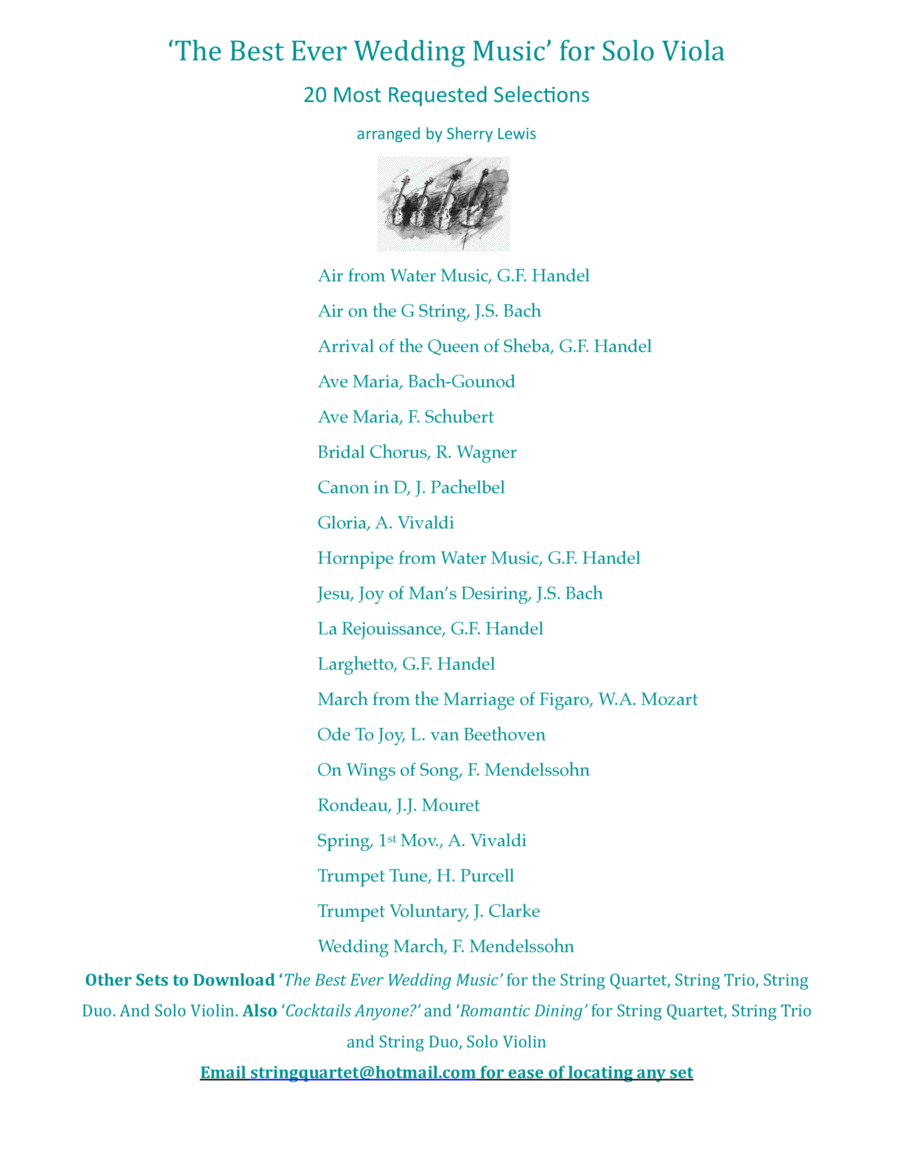Viola Solo - Level 3 - Digital Download SKU: A0.1189410 By Viola Solo Wedding Collection. By Various including Bach, Handel, Vivaldi, etc. Arranged by Sherry Lewis. Baroque,Classical,Romantic Period,Wedding. Individual part. 36 pages. Sherry Lewis Publishing #789046. Published by Sherry Lewis Publishing (A0.1189410). Viola Solo Wedding CollectionThe following 20 pieces are included in this collection:Air from Water Music, G.F. HandelAir on the G String, J.S. BachArrival of the Queen of Sheba, G.F. HandelAve Maria, Bach-GounodAve Maria, F. SchubertBridal Chorus, R. WagnerCanon in D, J. PachelbelGloria, A. VivaldiHornpipe from Water Music, G.F. HandelJesu, Joy of Man’s Desiring, J.S. BachLa Rejouissance, G.F. HandelLarghetto, G.F. HandelMarch from the Marriage of Figaro, W.A. MozartOde To Joy, L. van BeethovenOn Wings of Song, F. MendelssohnRondeau, J.J. MouretSpring, 1st Mov., A. VivaldiTrumpet Tune, H. PurcellTrumpet Voluntary, J. ClarkeWedding March, F. Mendelssohn.
